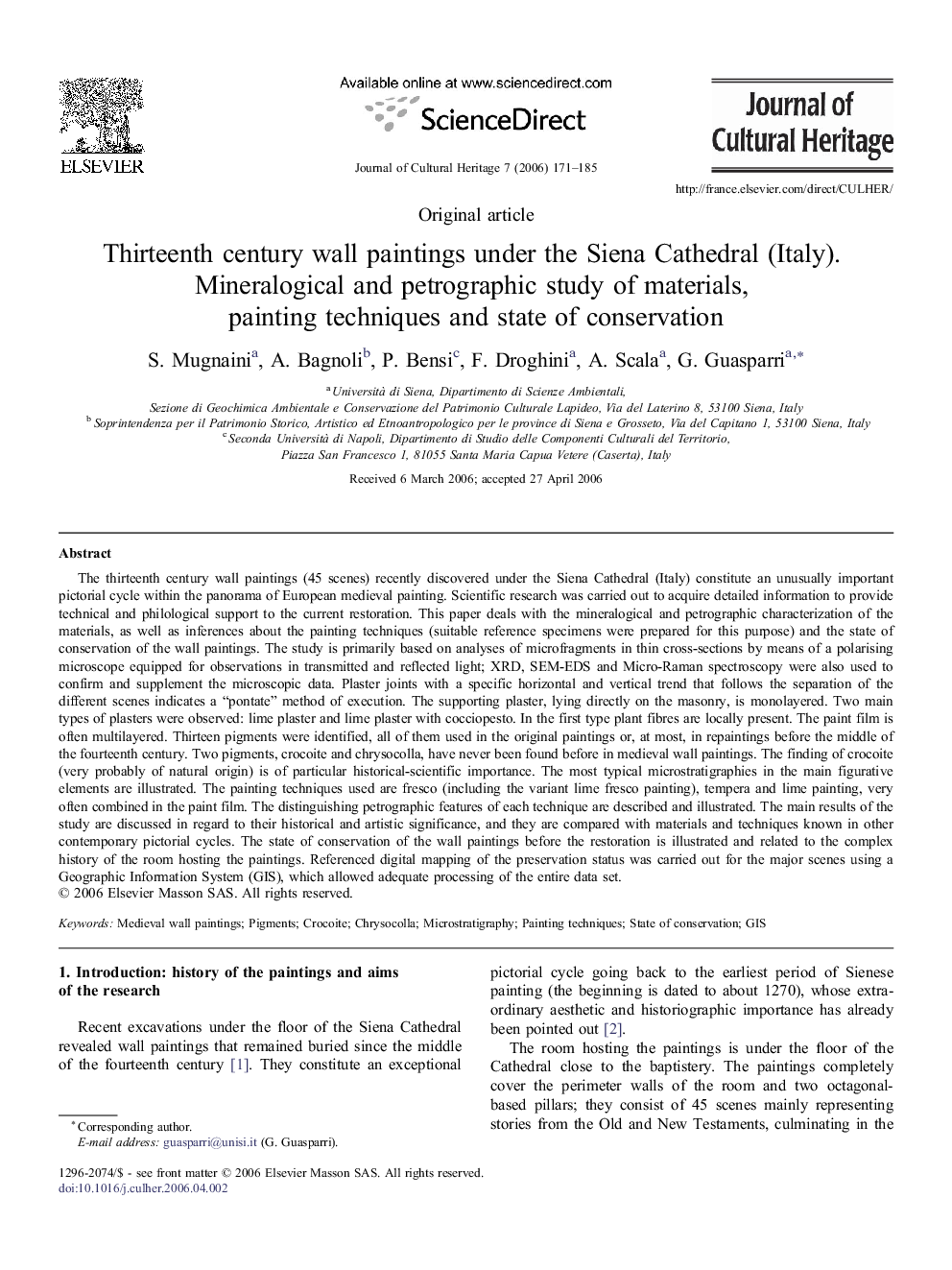| کد مقاله | کد نشریه | سال انتشار | مقاله انگلیسی | نسخه تمام متن |
|---|---|---|---|---|
| 1038701 | 944233 | 2006 | 15 صفحه PDF | دانلود رایگان |
عنوان انگلیسی مقاله ISI
Thirteenth century wall paintings under the Siena Cathedral (Italy). Mineralogical and petrographic study of materials, painting techniques and state of conservation
دانلود مقاله + سفارش ترجمه
دانلود مقاله ISI انگلیسی
رایگان برای ایرانیان
کلمات کلیدی
موضوعات مرتبط
مهندسی و علوم پایه
شیمی
شیمی تئوریک و عملی
پیش نمایش صفحه اول مقاله

چکیده انگلیسی
The thirteenth century wall paintings (45 scenes) recently discovered under the Siena Cathedral (Italy) constitute an unusually important pictorial cycle within the panorama of European medieval painting. Scientific research was carried out to acquire detailed information to provide technical and philological support to the current restoration. This paper deals with the mineralogical and petrographic characterization of the materials, as well as inferences about the painting techniques (suitable reference specimens were prepared for this purpose) and the state of conservation of the wall paintings. The study is primarily based on analyses of microfragments in thin cross-sections by means of a polarising microscope equipped for observations in transmitted and reflected light; XRD, SEM-EDS and Micro-Raman spectroscopy were also used to confirm and supplement the microscopic data. Plaster joints with a specific horizontal and vertical trend that follows the separation of the different scenes indicates a “pontate” method of execution. The supporting plaster, lying directly on the masonry, is monolayered. Two main types of plasters were observed: lime plaster and lime plaster with cocciopesto. In the first type plant fibres are locally present. The paint film is often multilayered. Thirteen pigments were identified, all of them used in the original paintings or, at most, in repaintings before the middle of the fourteenth century. Two pigments, crocoite and chrysocolla, have never been found before in medieval wall paintings. The finding of crocoite (very probably of natural origin) is of particular historical-scientific importance. The most typical microstratigraphies in the main figurative elements are illustrated. The painting techniques used are fresco (including the variant lime fresco painting), tempera and lime painting, very often combined in the paint film. The distinguishing petrographic features of each technique are described and illustrated. The main results of the study are discussed in regard to their historical and artistic significance, and they are compared with materials and techniques known in other contemporary pictorial cycles. The state of conservation of the wall paintings before the restoration is illustrated and related to the complex history of the room hosting the paintings. Referenced digital mapping of the preservation status was carried out for the major scenes using a Geographic Information System (GIS), which allowed adequate processing of the entire data set.
ناشر
Database: Elsevier - ScienceDirect (ساینس دایرکت)
Journal: Journal of Cultural Heritage - Volume 7, Issue 3, JulyâSeptember 2006, Pages 171-185
Journal: Journal of Cultural Heritage - Volume 7, Issue 3, JulyâSeptember 2006, Pages 171-185
نویسندگان
S. Mugnaini, A. Bagnoli, P. Bensi, F. Droghini, A. Scala, G. Guasparri,